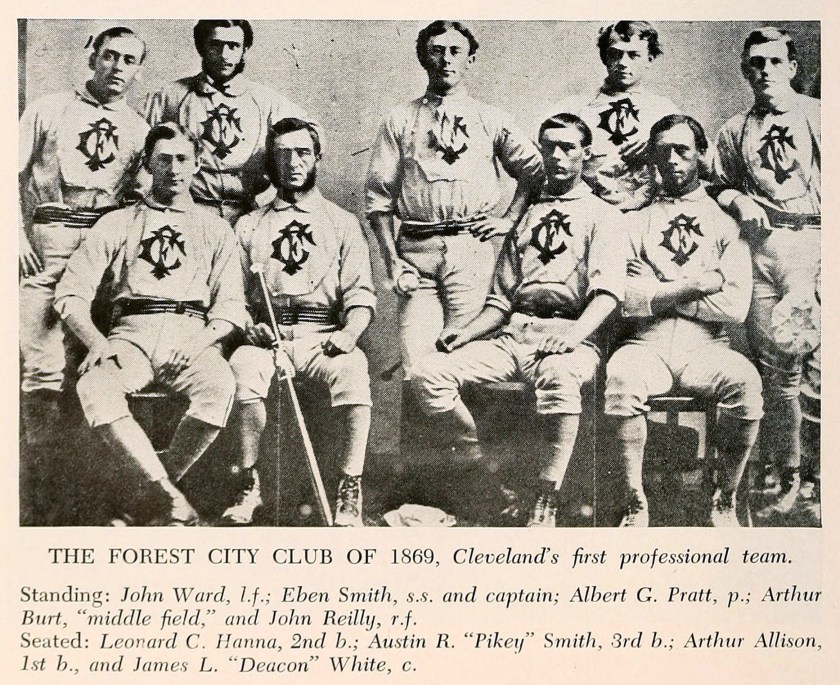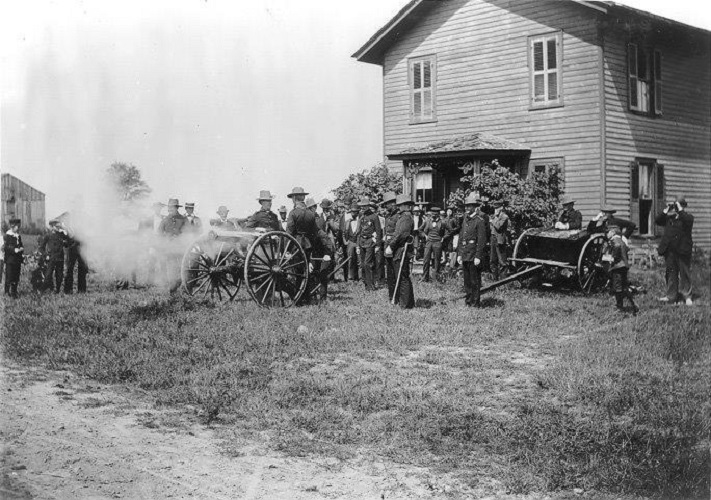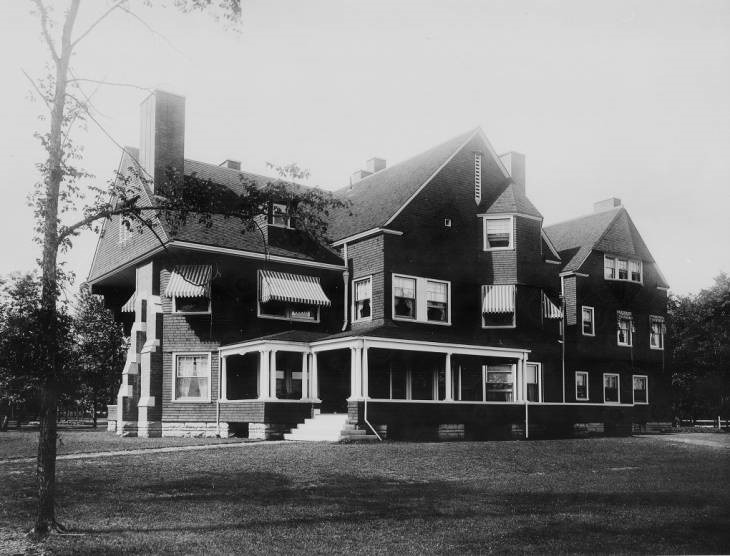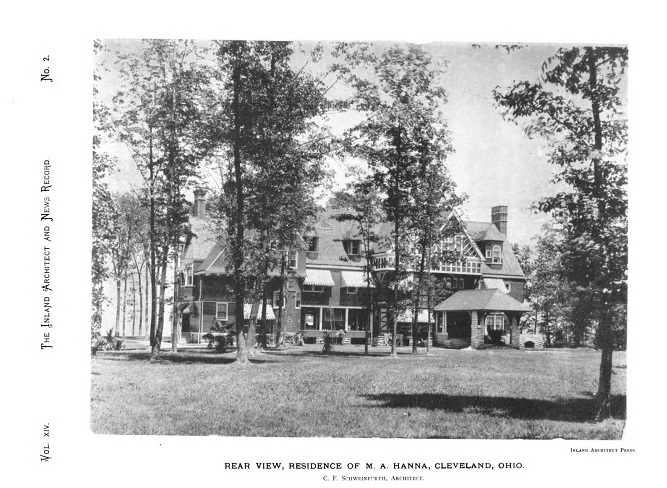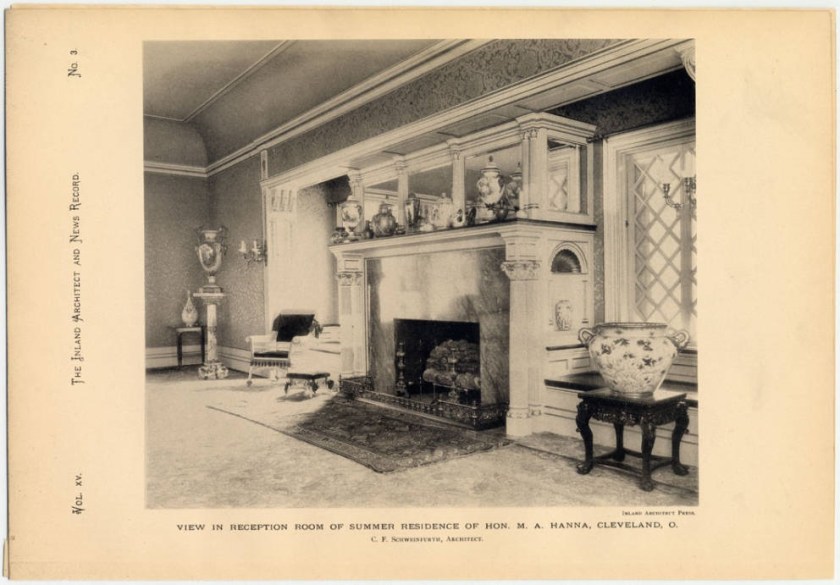
Joseph M. Gasser, was a resident of the Edgewater neighborhood from 1886 until his death in 1908. His honorable life of sacrifice, service, contribution, and industry, stands as stern rebuke to those small-minded fear-mongers amongst us who would build walls to shut out immigrants from foreign lands seeking refuge in the land of opportunity.
Joseph was born in 1843 in Switzerland, the son of Nicholas, a carpenter. His family immigrated to the United States in 1854. The family came to Cleveland where Joseph began to attend both the common schools and work in a pail factory in the flats at the age of twelve years old. Joseph continued working at the pail factory until the outbreak of the Civil War.

As soon as Joseph learned that the Southern rebels had fired on Fort Sumter, he enlisted for three months service as a private at the age of 19 in the Sprague Zouave Cadets, which was organized in Cleveland under the direction of Captain Charles A. DeVillers. The Sprague Zouave Cadets were subsequently mustered into the service of the United States as the Seventh Regiment of the Ohio Voluntary Infantry as Company B, retaining that letter during its service in the field. He reenlisted, June 19, 1861, for a period of three years. The Seventh Regiment was known as the Roosters.”

Mr. Gasser participated in the following Civil War battles: Battle of Kressler’s Cross Lanes (Cross Lanes, Virginia), August 26, 1861; First Battle of Kernstown (Winchester, Virginia), March 23, 1862, (in which Mr. Gasser was wounded severely in the left arm and side and was incapacitated for service until June 3, 1863); The Battle of Gettysburg (Gettysburg, Pennsylvania), July 1, 2, and 3, 1863; Lookout Mountain, Tennessee, November 24, 1863; Missionary Ridge, Tennessee, November 25, 1863; The Battle of Ringgold Gap (Ringgold, Georgia), November 27, 1863; Dalton, Georgia, May 8, 1864; Rocky Face Ridge, Georgia, May 1864; Resaca, Georgia, May 13 to 15, 1864, and Dallas, or New Hope Church, Georgia, May 26, 1864. Mr. Gasser was mustered out of service with an honorable discharge at the expiration of his enlistment on July 6, 1864.

The Seventh Regiment’s service was commemorated locally by the Seventh Regiment OVI Association with a monument erected at Woodland Cemetery (Woodland Avenue/East 71st Street). The monument was dedicated in 1872. The principal speakers at its dedication were General John W. Geary, the Governor of the State of Pennsylvania, General Erastus B. Tyler, and Major William McKinley, later Governor of Ohio and President of the United States. The monument cost $8,500 and consisted of Quincy granite for the base, a shaft of Peterhead red granite, and was topped with an eagle with outstretched wings of Peterhead gray granite.
The granite was quarried, polished, and engraved with a list of the Regiment’s battles in Scotland before being shipped to the United States. The lot on which it was erected was donated by the City of Cleveland.

Of course, the Ohio Generally Assembly also commemorated the service of the Seventh Regiment at the Battle of Gettysburg with the erection a marker, which is located near Gettysburg, Pennsylvania in Adams County at the intersection of Slocum Avenue and Williams Avenue. It was dedicated on September 14, 1887, and marks the position held by the Regiment on July 2 and 3, 1863. If you have occasion to visit the Gettysburg Battlefield, you now know of its Edgewater connection.
When Mr. Gasser returned to civilian life after nearly four difficult years of service to his adopted country, he sought both employment and education. The available information indicates that he initially boarded with his father at 63 Orange Street and worked for the Weaver Brothers Wholesale Liquor House (87 & 89 Merwin), the grocery firm of Pope & Hains (163 Ontario Street), and subsequently for five years as a postal carrier. He also sought to further his education while working so paid for two years of education at the Humiston Institute. The Humiston Institute, also known as the Cleveland Institute, was a private coeducational school for secondary education founded in 1859 by Professor Ransom F. Humiston, a respected Cleveland educator, who offered a college preparatory curriculum to both students from out of state as well as from the Cleveland area. The Institute closed in 1868.
In 1867, the industrious Mr. Gasser found love and married Miss Katherine Fox, with whom he had a daughter, Josephine.
The Cleveland Directory Company’s 1872/73 Directory reflects that Mr. Gasser was still a letter carrier but now resided and operated a business out of his residence at 345 Pearl. The business was listed under various headings, including confectionary, cigars, fruit, and variety goods. The Cleveland Directory Company’s 1877/78 directory reflects that Mr. Gasser moved his residence and business to 347 Pearl, and only listed his business under the headings notions, stationary, and confectionery.
In the August 13, 1921, issue of The Florist Exchange (p. 347), a article recounting Cleveland’s floral history recorded that “on Saturdays, [Mr. Gasser] made up bouquets and boutonnieres of Roses from the garden of Mrs. Gasser’s mother. As a dancing school was located on the second floor [of his small store], Mrs. Gasser thought a few buttonhole bouquets would sell–from this very small beginning grew the large business of today. The first greenhouses were built in Rocky River in 1880. Then a range of glass was built on Lake Ave. in 1885. The store was continued on [Pearl] until 1883, when a store was opened on lower Euclid Ave. in connection with the Heyse & Weisgerber Co., who were leading caterers in those days. It was only a few years later before they felt able to use an entire store individually. They bought a lot and built on Euclid Ave., near Bond St. [East 4th], moving to their present location later. The business was incorporated in 1901. Meanwhile, new greenhouses were started in Rocky River hamlet on Wooster Road. Here the main crop of flowers was grown. Now the firm has 350,000 sq. ft. of glass, covering eight acres. They cut as many as 9,000 Roses, 10,000 Carnations, and 5,000 Lilies daily. In 1902, the Lake Ave. greenhouses were moved and rebuilt at Rockport place. The store is now on Euclid Ave., next to the Cleveland Trust Co.” Other sources record that the innovative Mr. Gasser was also the first florist in Cleveland to utilize delivery wagons for floral deliveries.
Mr. Gasser eventually established a separate wholesale business to supply other florists while also maintaining his retail floral shops. His success was great and his services were much in demand by the most discriminating clientele in Cleveland.

WOODCLIFF
The Cleveland Director Company’s 1886/87 Directory records that Mr. and Mrs. Gasser resided on Lake Avenue, making them amongst the earliest residents of the neighborhood. And, of course, we know from city maps, that his residence with the greenhouses was called Woodcliff.

Although we know that Senator Marcus A. Hanna hosted the “Wedding of the Century” in the Edgewater neighborhood in 1903, it is fair to say that Mr. Gasser hosted the first Grand Affair in the Edgewater Neighborhood. Specifically, in 1896, during the Centennial Celebrations for the City of Cleveland, the Society of American Florists held its twelfth annual convention in Cleveland during the month of August. The convention was quite a success, as recorded by The Official Report of the Centennial Celebration of the Founding of the City of Cleveland and the Settlement of the Western Reserve (1896), which stated:
“An excellent opportunity for the study of the beautiful was afforded to Centennial visitors by the grand Floral Exposition held during ” Floral Week,” in connection with the twelfth annual convention of the Society of American Florists. This exhibition was opened on Tuesday afternoon, August 18th, in the Central Armory. An extensive and varied botanical display was set forth in the main auditorium, plants and flowers having been brought from all parts of the country to compete for prizes. It was the largest exhibition ever given in Cleveland. The Armory was transformed into a conservatory in which floral beauties from the North, East, South and West vied with each other for honors. There were palms and ferns and mosses and shrubs in terraces and groups, lilies in cluster, roses, violets — flowers of every class and kind. The exhibition was divided into two departments, one being the main display under the auspices of the Cleveland Floral Society, and the other being a trade exhibit for which a large section of the hall was reserved. The convention headquarters were in Army and Navy Hall, in front of which was displayed the national flag of the society. The hall was elaborately decorated. Garlands of evergreen hung from the ceiling, banks of palms arose in the corners and windows, and the plat form was almost hidden in a profusion of plants and cut flowers.” [pp. 160-161]
Mr. and Mrs. Gasser did not hesitate to host their colleagues most graciously:
“Late in the afternoon of the first day the delegates, accompanied by their wives, set out for a trolley ride. There were five hundred in the party for which a specially chartered train of eight cars was provided. The cars were gorgeously decorated with flowers and were freely admired as they passed through the streets. The destination was Woodcliff, the home of Mr. J. M. Gasser, on Lake avenue, where the president’s reception was held. The guests, about five hundred in all, were cordially received by Mr. and Mrs. Gasser on their lawn — a floral park of great beauty — and the company was later photographed. Refreshments were served under a canopy on the lake front, and after this came dancing and other amusements. Fairy lamps and Japanese lanterns were hung over the grounds, making the effect after nightfall very pretty.” [p. 162]
Mr. Gasser was a member of the Republican party, the Knights of Pythias, the Clifton Club and the Chamber of Commerce. The Cleveland Blue Book 1907 indicates his daughter and her husband, James C. Pettee, lived with Mr. and Mrs. Gasser at Woodcliff.
Mr. Gasser died on March 12, 1908, in Flint, Michigan after several years of poor health. He was buried in Lake View Cemetery (Lot 11-30 BNE).
The Florist Exchange reported, in its March 28, 1908, (p 466), edition, the following, as a sad denouement to such an accomplished life:

An estate of $250,000 would be worth approximately $6,100,000 in 2017.
Mrs. Katherine F. Gasser died on September 20, 1921, and is buried beside him. His life exemplified one of service to his country as well as business acumen and success.
It cannot be controverted that, of all the men who lived in the Edgewater neighborhood during the Gilded Age, no other is more deserving of our respect and admiration than Mr. Joseph M Gasser. He volunteered for military service as a private to preserve the Union, fought in many major battles that we still remember by name today, and was severely wounded in service to his adopted country. He was industrious and innovative, building a business, not from inherited wealth, but from the fruit of his labor, a successful business that sustained his family while employing and sustaining others and their families. And there is no evidence in the record that he accomplished any of the foregoing while betraying any trust, exploiting any workman, or bankrupting any business.



